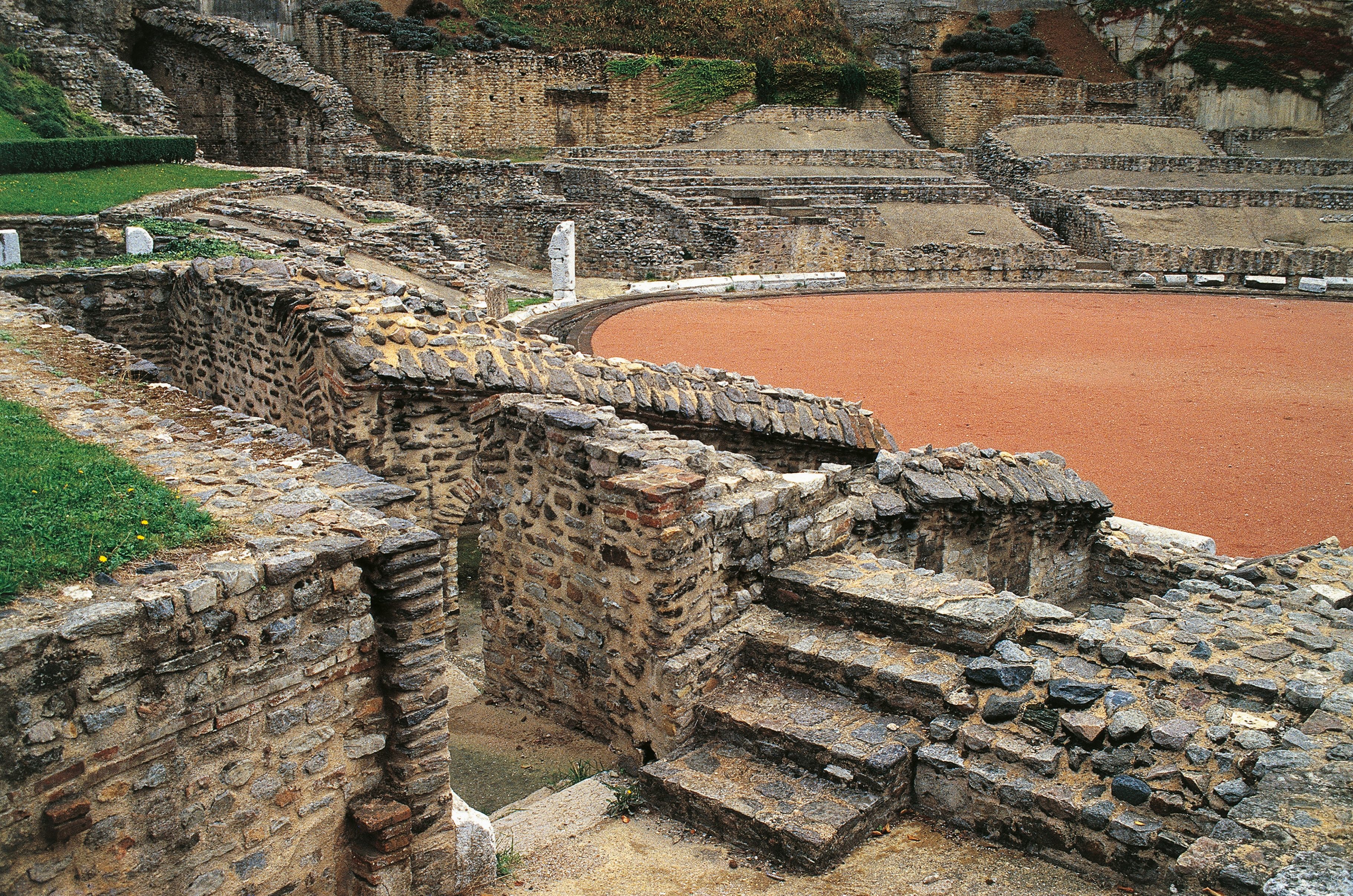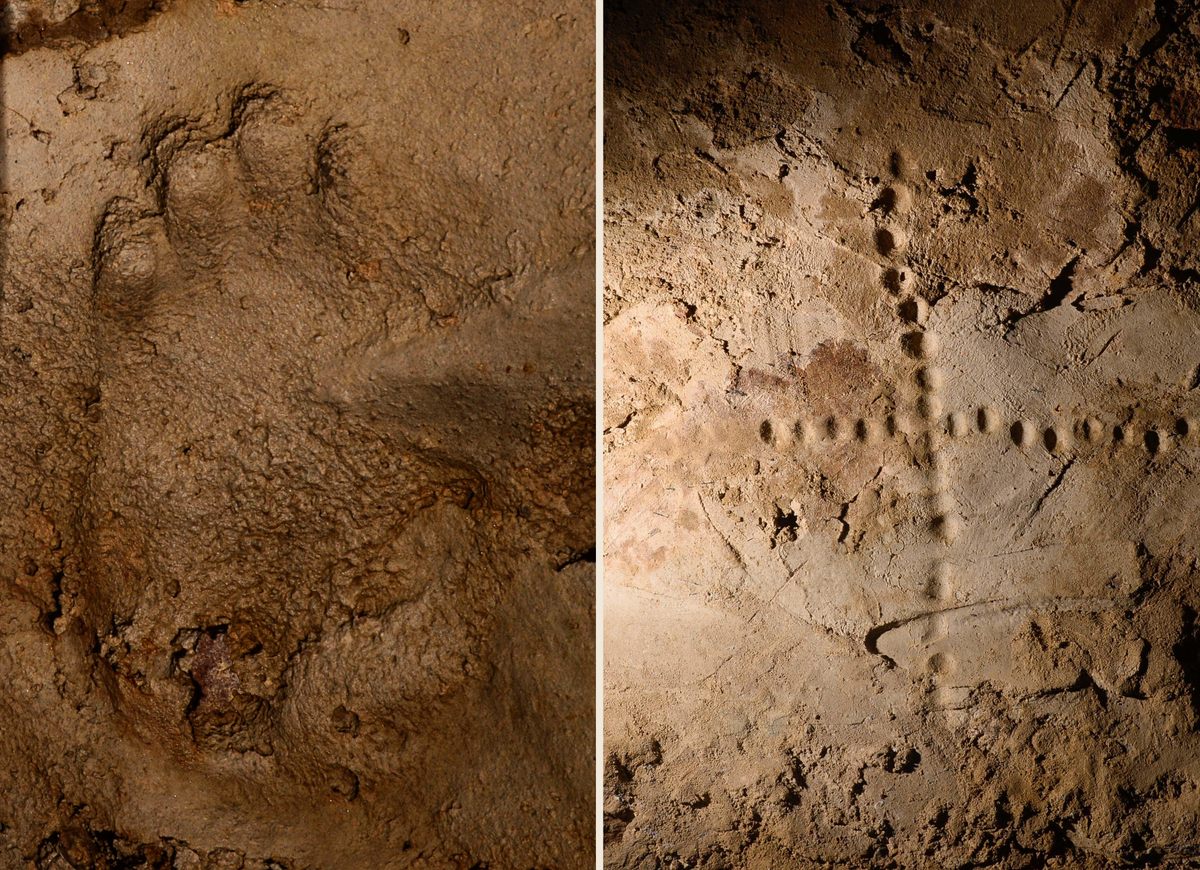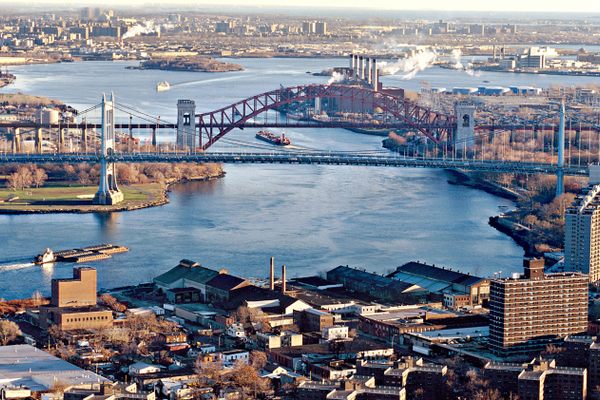Was There Treasure Buried Under Lyon?
Since their discovery more than 60 years ago, the “Fishbones” tunnels beneath the French city have been an enigma.
February 18, 1959, was just an ordinary day for road workers in Lyon, France, tasked with building a tunnel under Croix-Rousse Hill in a bid to reduce traffic congestion. While drilling, they stumbled upon an old well. That wasn’t unusual. Though Lyon lay across two major rivers, access to drinking water was poor, and the city was peppered with wells. On closer inspection, however, the road workers discovered that this well didn’t simply descend vertically. Branching off from the shaft was a network of 32 identical tunnels, each about 100 feet long and each terminating mysteriously in a dead end. The curious structure resembled a fish skeleton, so they were named the arêtes de poisson, or “fishbones.”
This might not seem all that strange either. Underground networks such as these are common in Europe. Most cities have subterranean tunnels formerly used for crypts, cisterns, or storage: Paris’s catacombs house the remains of over six million people, Edinburgh’s vaults were once the home of the city’s poor and their livestock; and Istanbul’s Yerebatan Saray, or Sunken Palace. is a vast underground water filtration system built in the 6th century* to supply water to the palaces of the city. Lyon itself has numerous underground tunnels, bunkers, and waterworks, many of which are open to the public. But none of these structures have taken so long to date—or posed such an enigma as to their purpose—as Lyon’s Fishbones.

The mystery deepened with their 1959 discovery, which was never even announced publicly. In 1961, a water leak from one of the wells attached to the Fishbones led Lyon’s Municipal Service to discover another one of the passages, in which they found a saw, trowel, and a significant amount of human remains, which they assumed had been chucked down one of the well shafts. Among the “rubbish” was half of a bronze laurel wreath, covered in gold leaf.
Amable Audin, historian and founder of Lyon’s Gallo-Roman Museum, was ecstatic about the discovery, according to his colleague Cyrille Ducourthial. Lugdunum, Lyon’s predecessor city, was founded in 43 BC by Roman senator Munatius Plancus to house refugees fleeing persecution in Vienne, some 20 miles south. It rapidly became one of the most important cities in the Roman Empire, producing two future emperors and counting 200,000 inhabitants by 192. Le Amphithéâtre des Trois Gaules (Amphitheater of the Three Gauls) still lies at the foot of Croix-Rousse, remarkably well preserved amidst the Bohemian boutiques, cafés, and bars that the area is now known for. Audin deduced that the wreath came from one of the statues which originally sat on the altar of the Sanctuary of the Three Gauls (of which the amphitheater was a part). He displayed it in the museum.
But instead of pursuing further investigation, Audin incorrectly concluded that the tunnels were a modern construction. He had never come across Roman architecture built from the type of stones used in the Fishbones and supposed that the passages had been built during the 1600s, the same time as the streets above them. And so the human remains were exhumed, the tunnels were resealed, and the city of Lyon continued to ignore the existence of the Fishbones, a giant elephant in Croix-Rousse’s basement.

For over 50 years, the Fishbones lay all but forgotten. The only visitors were clandestine: youths graffitiing walls and holding raves in the tunnels and curious spelunkers. One of the latter was Walid Nazim, who found a point of entry underneath the Catholic church of Saint-Bernard in Croix-Rousse. The church had been deconsecrated in 1999 and closed completely in 2004.
Nazim had never been short of places to explore. One of the best-known labyrinths lay underneath Fourvière Hill, across the river from Croix-Rousse. Originally built as an irrigation system, the tunnels came to public attention when a section collapsed and caused a landslide in 1930, killing 39. Further tunnels known as Les Sarrazinières stretched all the way from Caluire, just north of Croix-Rousse, to Parc Miribel, five miles east along the Rhône River and had been largely flooded by the river. When Nazim discovered the Fishbones at age 11, he felt that they were different to the rest of the city’s subterranean network, and in the absence of answers, he formed his own hypothesis: that the Fishbones were secret passageways used by William of Beaujeu, the last Grand Master of the Knights Templar. He’d stumbled across a line in a book by historian Marius Audin that alluded to a network of tunnels under Lyon. “The Sire of Beaujeu had established a system of underground communications forming a double archway, scattered with retreats, which enabled him to circulate between Lyon and Miribel with two lines of troops in opposite directions,” Marius Audin had written.

Nazim studied the dead ends of the Fishbones again. Some were blocked with wood and concrete, different from the stone used in the passages. He deduced that the Fishbones had once been connected to Les Sarrazinières, and that these were the tunnels described in Marius Audin’s book. He began researching the mysterious Knights Templar, an organization founded by French knight Hugues de Payens in 1119 to protect Christian pilgrims traveling to Jerusalem. Pilgrims were often slaughtered by the hundreds en route, generally for their valuables, so they deposited money with the Templar before starting their journey, which they redeemed upon arrival. It’s often considered to be the world’s first international bank. As an exceedingly rich, secretive enterprise, rumors of a hidden treasure of the Templars have flown for centuries. Nazim was convinced that the tunnels had been built at this time, during the Crusades, possibly to conceal the long-lost treasure of the Knights Templar. He began giving talks internationally, and in 2011 he self-published a book, The Secret of Lyon’s Fishbones. Whilst there was little historical evidence to back his theory, Nazim’s curiosity piqued public interest.
It wasn’t until 2007, 48 years after the road workers’ original discovery, the French government asked Lyon’s Archaeology Department to reinvestigate the Fishbones. Eight years earlier, the Mont Blanc tunnel linking France with Italy via the Alps had been the site of a catastrophic accident. A transport truck had caught fire, blocking the tunnel and killing dozens. Concerned about the risk of a similar accident in Lyon, the government now planned to double the width of the tunnel to create an emergency exit route, but first they needed to be sure that they weren’t drilling through an important historical site.

Ducourthial, the archaeologist and researcher for Lyon’s Archaeology Department, got to work right away. In the summer of 2007, he and his team of archaeologists spent six weeks almost entirely underground studying the Fishbones. It took three years to reach a conclusion. Many of the wells piercing the Fishbones were much more modern than the original structure and had been concreted over in places, so it was difficult to find parts of the original structure to carbon date. As an added impediment, city residents had dumped their rubbish in wells for centuries, so although the laurel wreath was definitely Roman, it had lain alongside 21st-century plugs and sockets. Under layers of graffiti , however, they discovered Roman inscriptions: scrawled names, numbers, and even evidence of people practicing writing the alphabet. In 2010, using radiocarbon dating, the conclusion was drawn: the Fishbones were Roman, built between 100 BC and the 1st century, around the same time as the Amphitheater of the Three Gauls. Nazim had got one thing right though: the tunnels had indeed been connected to the Sarrazinières Tunnels.
One great enigma remains: the purpose of the tunnels. In 2022 June, specialists commissioned by Lyon’s Archaeology Department (including geologists and historians) presented their hypotheses at a seminar; in keeping with the years of mystery surrounding the tunnels, there was no definitive answer.** Numerous theories have already been debunked: the tunnels were not a water drainage system, a refuge, or a catacomb. That the Fishbones had been linked to the Sarrazinières Tunnels further mystifies matters; if they were merely used for storage, why did they need to be attached to eight miles of tunnels stretching out of the city?
Ducourthial has a hypothesis of his own: Although the Fishbones were not purpose-built to house the secret treasure of the Knights Templar, he says there’s a strong possibility that they were a sort of treasure trove.
“The Fishbones are well built, but they’re not exceptionally sophisticated,” he explains. “The tunnels are very humid, so it’s unlikely that they were used to store food. It’s more likely that they were used during the Roman Empire to store money collected from taxes, or indeed treasure.”
*Correction: A previous version of this story misstated when Istanbul’s Yerebatan Saray was constructed.
**This story was updated to include the findings of the June 2022 seminar.
This story originally ran in 2022; it has been updated for 2022.























Follow us on Twitter to get the latest on the world's hidden wonders.
Like us on Facebook to get the latest on the world's hidden wonders.
Follow us on Twitter Like us on Facebook